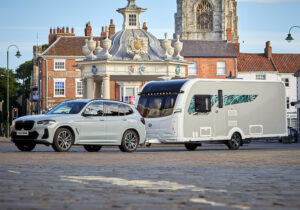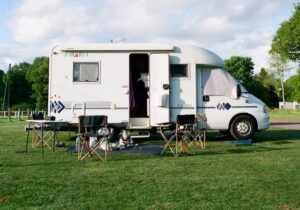Dan Cartwright has over 12 years of experience in the caravan and motorhome industry. He is a judge for a number of prestigious leisure vehicle awards and regularly heads off in his motorhome with his family. Every week, Dan shares his insights with the community. Here’s what he has to say this week.
As British staycations become an increasingly popular option, motorhome holidays are an amazing way to explore the great outdoors and sample touring life. A motorhome rental, if done right, provides an excellent opportunity for couples and families to try it for the first time without making a huge commitment.
Having spoken and listened to many of our readers, lots of people are setting off for their first motorhome rental holiday and asking for advice. So, here are some of my best tips for you.
In a single article, I can’t tell you how to drive and operate your motorhome. This is just to point you in the right direction. CaravanTimes isn’t the only source of information out there either. A huge amount of information and instruction exists online for every motorhome, so go and get a flavour for yours.
Picking up the motorhome
Typically, you’ll need to go to another location to pick up your motorhome. The individual or company renting it out will give you a tour and the appropriate documentation. It’s very important to listen to what’s said.
Before you go, I’d recommend that you divvy up topics between yourself and your companions. You might have to travel a long distance to pick up the motorhome and if you’re tired, it’s a lot to take in. So, between any adults in your party, split the areas you’ll each focus on. You might listen closely when your guide is talking about water, whilst the next person will concentrate on waste and so on.
Make sure you also find out where the backup information is after your induction. Is there a booklet? A website? If I have this specific fault, how can I find out what to do? Of course, it’s a rental, so it’s not your job to fix the vehicle, but it’s often user error rather than an internal fault that will stop you from enjoying your holiday.
Don’t be too ambitious
Think about your first few nights very carefully. On the first one, don’t arrive tired. If you’re planning to tour the northern coast of Scotland but will be picking up the vehicle in Yorkshire, it’s worth planning a stop along the way. If you’re knackered, it’ll be exponentially more difficult to get to grips with your new rental.
Moreover, if you’re planning to head off-grid, perhaps to a beautiful, certified location, or even wild camping, factor this into your planning. For your first night, I’d suggest going to one of the larger CAMC sites for several reasons. They’re generally great for access, provide good services and are always filled with lots of other holidaymakers.
The other people on site will have a combined touring experience of thousands of years and, in my experience, caravanners and motorhomers are some of the friendliest faces you’ll ever find. If you’re struggling with anything, you can just ask your neighbour and nine times out of ten they’ll be happy to help.
Equipment you wouldn’t think to take
Of course, there are touring essentials, as well as other bits of kit you’d be smart to have on hand, but what about the equipment nobody really ever talks about?
Firstly, post-it notes and a pen. With these, you can stick notes on things like the steering wheel to say: “The electric cable is plugged in – don’t drive off!” In fact, you can place them all over the cab to note the height and width of your motorhome. Particularly with rentals, they can often be higher than a typical van and this is where newbies have often been caught out under low bridges!
Other things I’d strongly recommend you consider include cloths, which can be used to reduce noise whilst driving. I carry a huge bag which I use to stuff between rattling drawers, wrap around crockery or wedge doors shut. Bungee straps are another great tool for securing items in place whilst you’re on the road.
Also, duct tape. The beauty of renting is that everything should work when you pick it up, and if it doesn’t, it’s someone else’s problem! Little things, like a door swinging around, can be fixed with a tiny bit of duct tape. I’m not saying bring the whole toolbox along, but do take some things that can help.
General safety tips
Even if your motorhome has air conditioning, do not leave your pets or children inside. These leisure vehicles can get incredibly hot! The AC can malfunction and some are very airtight, making them unsafe in hotter climates.
Before you set off, you must switch off the gas. This should be covered in your manual, but it’s a classic mistake that people make when operating a motorhome. Additionally, avoid driving with a full water and/or waste tank. It will really affect the vehicle and the tank(s) can become dislodged, so take the time to reduce your water level before heading off.
Your tyre pressure should be checked regularly. A blowout on any vehicle isn’t a fun experience, but given the dimensions and top-heaviness of motorhomes, it’s much more important to avoid issues with the tyres. You can get a cheap digital pressure gauge and I’d recommend using it each time you head off for the day.
Renting a motorhome for the first time can be one of the best adventures you’ll ever have. However, it can also be mired by silly mistakes or misunderstandings. So, hopefully, this article has signalled a few things that can make your trip as enjoyable as possible.
The biggest tip of all? Ask, ask, ask!
Photo credit: Kampus Production / Pexels




